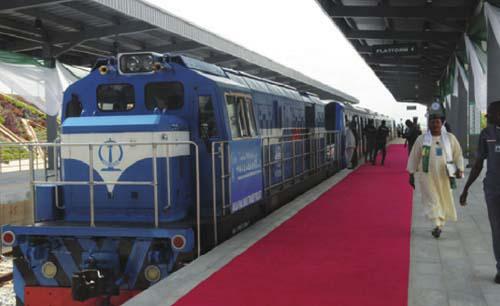Getting Through The Hiccups
2018-10-18ByLuYan
By Lu Yan
In August, the Ministry of Commerce(MOFCOM) released data on Chinas nonfinancial outbound direct investment(ODI), which continued steady growth in the first seven months of the year.
From January to July, Chinese investors made $65.27 billion of non-financial ODI in nearly 4,000 overseas enterprises in 152 countries and regions, marking a 14.1-per- cent increase from the same period a year ago.
Bai Ming, a senior research fellow at the Chinese Academy of International Trade and Economic Cooperation, told Beijing Review that Chinese companies investments abroad in the first seven months of the year saw a considerable increase, though still not reaching the highest levels.
“To a great extent, we can see it as restorative growth,” Bai said.
New features
A ministry index that measures ODI activity each month showed that it remained stable at 192.93 in July, compared with the peak of 205.3 and low of 189.6 registered within the first seven months of the year.
Besides sound growth momentum, Chinas ODI showed several new features and trends. Chinese companies increased investment in 54 countries along the China-proposed Silk Road Economic Belt and 21st-Century Maritime Silk Road. The $8.55-billion added investment represented an 11.8-percent year-on-year increase, with new construction contracts along the Belt and Road worth $57.11 billion.
In addition, overseas economic and trade cooperation zones played a major role in Chinas ODI. According to MOFCOM, by the end of June, China had built 113 overseas economic and trade cooperation zones in a total of 46 countries.
Along the Belt and Road routes, China established 82 overseas economic and trade cooperation zones in 24 countries, with an accumulated investment of $2.59 billion from January to June, accounting for 87 percent of Chinas new investment in overseas economic and trade cooperation zones worldwide. In total the zones created $3 billion worth of tax revenue for these countries, facilitating common development for China and host countries.
In fact, the trade and investment ties between China and these countries have been expanding since the launch of the Belt and Road Initiative in 2013. During this period, economic and trade zones have attracted nearly 4,000 enterprises, creating $2 billion worth of tax revenue for these countries and providing 244,000 local jobs, according to MOFCOM data.
Structural improvement of outbound investment contributed to the ODIs continued stable growth. Chinese contractors signed more agreements for large projects abroad in the first seven months of the year. Transport, power and construction projects accounted for 68.2 percent of the total contract value, and more than 85 percent of new projects contract value surpassed $50 million.
Meanwhile, no new projects were reported in sectors such as property development, sports and entertainment, since the Chinese Government made strong efforts to promote sound growth of overseas investment by forestalling risks.
On August 18, 2017, the State Council released a guideline, making it clear that overseas investment that went against peaceful development, win-win cooperation and Chinas macrocontrol policies would be restricted. Those on the list included real estate, hotels, entertainment, sport clubs and outdated industries.
The document stipulates that enterprises should take the lead in exporting Chinas superior technology and equipment, upgrading the nations research and manufacturing ability and making up the shortage of energy and resources through prudent cooperation in oil, gas and other resources.
“Undoubtedly, Chinese companiesgoing-global strategy has been a success, but problems have also emerged, such as bogus investments and ignorance in investment,” Bai said, adding that he believed that the guideline has effectively led overseas investment toward a more rational direction.
Challenges and expectations
Despite sound momentum, Chinese companies still face challenges when going abroad, especially as trade protectionism is on the rise in some countries.
In the United States for example, recent regulations such as the Foreign Investment Risk Review Modernization Act signed by President Donald Trump on August 13, as well as the expanding power and scope of the Committee on Foreign Investment are posing challenges. In recent years, many Chinese investment projects were rejected by the United States.
In some developing countries, on the other hand, factors such as incomplete institutions, weak infrastructure, unstable political landscapes and chaos caused by war also hinder Chinese investment and expose investors to high risks.
At the same time, Chinese companies also have room for improvement, as some of them jump on the investment bandwagon without an understanding of laws and regulations or culture and convention in host countries, causing conflict with local people.
“The so-called ‘China threat theory and‘Chinese colonialism advocated by some Western countries provoke dissension, too,”Bai told Beijing Review.
He suggested that Chinese companies conduct thorough research on countries and local partners before making an investment. When projects are launched, investors should bear in mind social responsibilities and reduce misunderstandings as much as possible.
In this sense, overseas economic and trade cooperation zones have shown good performance in recent years. In spite of an unsatisfactory international environment, such zones can be a safe haven since they are less susceptible to outside influence.
“In the past, going global was limited to individual companies, while now it has expanded to industrial chains,” Bai said, adding that Chinese companies belonging to the same industrial chain with similar demand can join hands in their overseas expansion and communicate smoothly with local partners.
Bai concluded that although Chinese investors will face increasing difficulties in Western countries, he expects that with the conclusion of the 2018 Beijing Summit of the Forum on China-Africa Cooperation, investment in countries along the Belt and Road routes, especially on the African continent, will increase and that the government will introduce more policies to regulate and encourage outbound investment.
